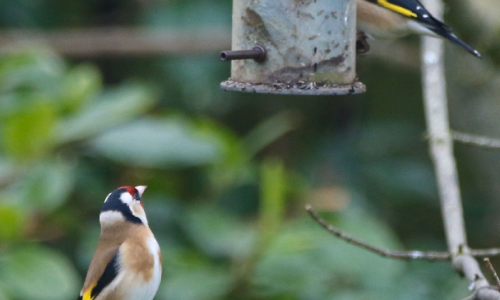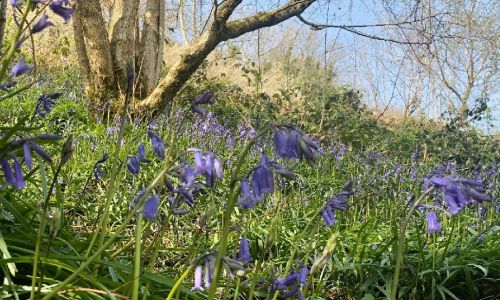Planting trees at your veterinary practice: Part One
An introduction to the types of trees that can planted in the grounds of your veterinary practice
There is no doubt that we should be planting more trees, and it’s also highly likely that there are far more places in which we could be planting them than we currently think. That might even include the grounds of your veterinary practice (assuming there is some open space around the practice buildings that isn’t completely concreted or tarmaced over – although even then you may still have some options, such as the species that will happily grow in containers).
But what trees should you be thinking of planting?
Understandably there is no simple answer, but the following may give some helpful basic guidance to making the right choices for your practice’s particular circumstances. Some tree species are mentioned, but these should be seen as “conversation starters” rather than a definitive list, and do bear in mind that not all species will do well everywhere.
Objectives
Beyond planting a tree (or trees) to help mop-up carbon-dioxide, are there other objectives that you have for your planting? Trees (including the trees we plant and manage as hedges) can provide:
- Wildlife habitat and/or food
- Visual screening
- Boundary definition and/or security
- Windbreaks
- Shade
- Soil stabilisation
I have purposefully left out timber, since this is probably outside the realms of most veterinary practice grounds, but there are other small-scale ancillary products including a potential source of kindling wood and compostable leaf-fall. How much of any of these attributes you do, or do not, wish from your plantings will be very important when you choose what to grow.
Geography and Geology
The location of your practice will have an impact on what will grow successfully, with altitude, typical seasonal temperatures, rainfall, amount of sun, and the local soil types all having profound effects on the best species to consider. Often the best thing to do is to see what grows well in your locality, as planting accordingly is likely to significantly improve your chances of raising thriving trees. However, do bear in mind that soil types can change dramatically within just a few metres; it doesn’t matter if fruit trees grow really well in your neighbourhood if your practice grounds are on exposed bedrock (which will have similar species-limiting properties to tarmac and where container-grown trees are probably the simplest option).
Multi-Use Spaces
Unless the practice grounds are unusually extensive and enable the planting of parkland trees and copses, the majority of places where we could plant trees in the grounds of veterinary practices are likely to be in areas with multiple uses. Examples could be car parks and adjacent to driveways or paths. In these examples thought has to be given to how trees might influence those uses; for instance, think hard about whether to plant large leaved lime trees in car parks as, although fantastic for pollinators, it is likely in summer that they will drop a sticky substance like glue onto anything below and in the autumn to drop an immense amount of leaves. It doesn’t mean that this tree is entirely unsuited to this location, but you don’t want these characteristics to come as a nasty surprise when the trees start to reach maturity.
Tree size
You can plant trees at seed upwards so it’s really important to know how big a tree is likely to reach as it matures. Traditional majestic UK native hardwood standards like oak, beech, chestnuts and small leaved limes (plus our native conifer, the Scots Pine) are magnificent in large open spaces but may very well not be suitable for every practice garden or car park. Consider how much light your tree will block when it grows to its full height, as well as the volume of leaves it is likely to drop in the autumn. Could your practice setting cope with this in the future? There are a variety of techniques available to appropriately limit the height these trees can reach, but their nature is to grow tall with large canopies and we therefore need to be careful about where we plant these species.
Proximity to Buildings and Hard Landscape Features
Both the branches and the roots of trees have the ability to interfere with buildings, walls and paths as the tree grows. Again, by knowing the likely size of our tree we can plant in a location that minimises the risk of gutters and windows being rubbed by branches, foundations being undermined, or paths and road surfaces being lifted by roots. Remember, too, that roots have little regard for underground pipework, so it is best to avoid planting trees above or adjacent to drains. Similarly, branches are utterly unconcerned about overhead wires so think carefully about planting anything that could grow to interfere with any cables (particularly mains electric wires, under and near which you shouldn’t be planting any trees at all).
Neighbours
Although Leylandii conifers planted on boundaries have received the greatest flak from angry neighbours caught in the shadow of these rapidly growing tall evergreens, do consider whether the tree you are about to plant might unreasonably affect any neighbours. Will it block their light, habitually drop fruits or branches on their land, damage their property due to root growth or tear their clothes whenever they walk past? Trees typically last a long time, so be thoughtful!
Choosing A Location To Suit The Tree Itself
So far we’ve looked at avoiding planting certain trees where they might cause problems. We also have to consider the trees themselves. Their roots need to have room to grow and without continuously being crushed by vehicles running over those roots, they need to be able to extract water and nutrients from the soil, and they do need sunlight. Trees are very good at sending out roots to find more water and nutrients, and very good at growing branches upwards and outwards in search of more sun, but they can’t do those things indefinitely if the resources simply aren’t there.
Tree Diseases
In recent years a number of new tree diseases have emerged to threaten a number of species. Ash Dieback, a chronic fungal disease, has rapidly spread through the UK and is likely to significantly impact the nation’s Ash population. Whilst the disease is researched, and ahead of any breakthroughs with disease resistant strains, it is generally considered very unwise to consider planting any new Ash trees.
Oaks, Horse Chestnuts and other native hardwoods are also increasingly under attack from a variety of insect and microbiological pathogens, including the caterpillars of the Oak Processionary moth, several beetles, Phytophthera ramorum, Pseudomonas syringae, etc.
Climate change models would suggest that further challenges are likely to arise as UK temperatures continue to rise and the ranges of insect vectors continue to spread. It is not yet known how our native tree populations will alter as a consequence of climate change. Already, the ranges of trees which used to be seen as Southern-England-only species are spreading northwards in the UK; it is possible that, with rising temperatures, species currently viewed as “exotic” will increasingly become suited to future UK temperatures.
That’s A Lot of Cautions and Try To Avoids! Are We Left With Any Trees That Might Be OK?
Certainly! Even with all these potential restrictions and caveats there are still many tree types to consider. The larger trees may well be perfectly OK for your practice as long as you approach them with a full understanding of their likely growth habits.
Root-stocks
Some types of tree (Apples and other fruits are most commonly referred to, but many other species are represented too) are available to buy grafted onto particular “root stocks”. In this way it is possible to choose a particular above ground tree for its desirable characteristics, but attached to a root system that will have an over-riding effect on the size the above ground tree will attain. We can thus plant trees with confidence that they are almost certain to grow to a specific height range; it doesn’t mean that they won’t need pruning and ongoing care, just that they are unlikely to require a crane to do the trimming!
Part 2 will discuss some species of trees to consider and how to go about successfully acquiring and planting them.
Rob Jackson
BVetMed, DipSurv(RP), MRCVS is a dual-qualified vet and rural practice surveyor. He qualified from the Royal Veterinary College in 1996 and from the College of Estate Management in 2004; over the last 24 years he has worked in mixed, large animal and equine practices, been a British Equestrian Team Vet and successful orthopaedic surgeon, and seen equine cases on five continents. He has also been Property Manager for the 12,000 acre Lulworth Estate in Dorset, and General Manager for the National Trust’s Petworth House & Park, Woolbeding Gardens and Uppark House & Gardens properties in West Sussex.
Rob is now a director of a veterinary and rural property consultancy and runs VetOffset - the UK’s first veterinary-specific carbon sequestration and habitat creation service utilising tree and hedge planting.
Thinking of planting trees at your workplace?
Maybe you've already planted a number of trees at your practice or perhaps all of this is new to you. Whatever your level of experience — we'd love to hear your success stories, planting concerns and top tips.


